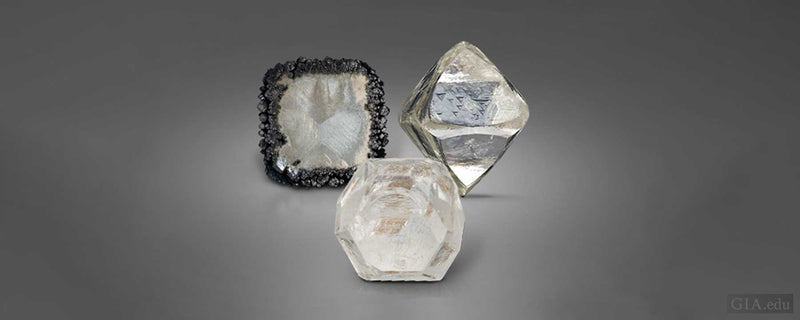In the world of diamonds, the battle between HPHT (High-Pressure High-Temperature) and CVD (Chemical Vapor Deposition) synthesis techniques has been ongoing, captivating both gemologists and consumers alike. These two methods represent the forefront of technology in creating synthetic diamonds, each with its own set of characteristics and implications for the industry. In this comprehensive guide, we delve into the intricacies of HPHT and CVD, exploring their processes, qualities, applications, and the implications they hold for the diamond market.
Understanding HPHT (High-Pressure High-Temperature)
HPHT, or High-Pressure High-Temperature, is one of the oldest and most established methods for creating synthetic diamonds. In this process, carbon atoms are subjected to extreme pressures and temperatures mimicking those found deep within the Earth’s mantle, where natural diamonds are formed over millions of years.
The HPHT method typically involves placing a small diamond seed (either natural or synthetic) into a carbon source, along with a metal catalyst. These elements are then subjected to pressures ranging from 5 to 6 GigaPascals and temperatures between 1,400 to 1,600 degrees Celsius. Under these conditions, carbon atoms dissolve into the diamond seed, gradually crystallizing to form a larger diamond.
One of the key characteristics of HPHT diamonds is their high clarity and color, often rivaling those of natural diamonds. Additionally, HPHT diamonds tend to exhibit a slightly different crystal structure compared to their natural counterparts, which can sometimes be identified under careful examination.
Unveiling CVD (Chemical Vapor Deposition)
CVD, or Chemical Vapor Deposition, represents a newer and increasingly popular method for producing synthetic diamonds. Unlike HPHT, which relies on extreme pressure and temperature, CVD involves a chemical process conducted under low pressure and moderate temperatures.
In the CVD process, a diamond seed is placed in a sealed chamber along with a carbon-rich gas, such as methane. When the chamber is heated to around 800 to 1,000 degrees Celsius, the gas molecules break down, releasing carbon atoms. These carbon atoms then precipitate onto the diamond seed, gradually building up layers of crystalline carbon until a diamond is formed.
CVD diamonds are known for their exceptional purity and crystal clarity. They often exhibit fewer impurities and inclusions compared to HPHT lab created diamonds, making them highly desirable for various industrial applications as well as jewelry.
The Battle of Techniques: HPHT vs. CVD
The debate between HPHT and CVD revolves around several key factors, including cost, quality, and ethical considerations. HPHT diamonds, being the older technology, often require higher energy inputs and longer processing times, making them relatively more expensive to produce. On the other hand, CVD diamonds, with their simplified process and lower operating costs, offer a more cost-effective alternative.
In terms of quality, both HPHT and CVD diamonds have their own strengths. HPHT diamonds are renowned for their natural-looking color and clarity, closely resembling high-quality natural diamonds. Meanwhile, CVD diamonds boast exceptional purity and consistency, making them ideal for industrial applications where flawless clarity is paramount.
From an ethical standpoint, some consumers prefer CVD diamonds due to their minimal environmental impact and lack of reliance on mining. CVD technology produces diamonds in a controlled laboratory setting, reducing the need for environmentally destructive mining practices associated with natural diamond extraction.
Conclusion: Navigating the Diamond Landscape
In the dynamic world of diamond synthesis, the rivalry between HPHT and CVD continues to shape the industry, offering consumers a diverse range of options to choose from. Whether you prioritize the natural aesthetics of HPHT diamonds or the purity of CVD diamonds, both technologies have undoubtedly revolutionized the way we perceive and acquire these timeless gems.
As technology advances and consumer preferences evolve, the debate between hpht vs cvd is likely to persist, driving further innovation and pushing the boundaries of diamond synthesis. Ultimately, the choice between these two techniques lies in understanding their unique characteristics and how they align with your personal values and preferences.

![Create A [pii_email_da536d41ce343ebf2a5f] A High School Bully Would Be Afraid Of](https://cdn.images.express.co.uk/img/dynamic/59/750x445/985057.jpg)